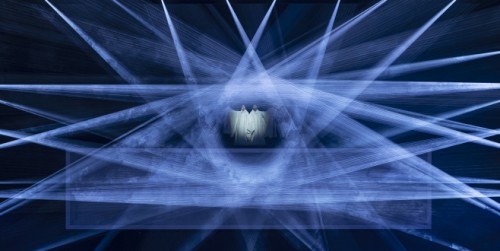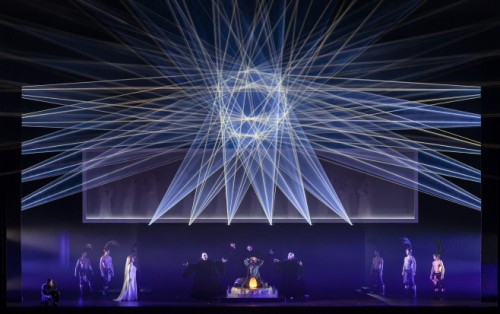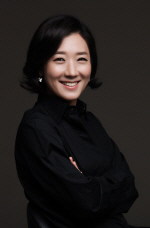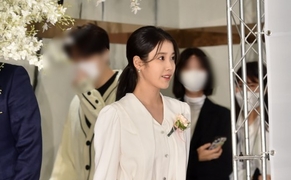Collaborative performance with teamLab Japan
 |
| A scene from 'Turandot' by Tokyo Nikikai Opera/ (c)teamLab, Daniel Kramer, Tokyo Nikikai Opera Foundation |
One of the most prominent philosopher Slavoj Žižek, and his colleague Mladen Dolar mentioned that the opera was nothing but a taxidermized art in their book ‘Second Death of Opera.’ This book is not a specialized work on opera, but a philosophy book that analyzes social phenomena through opera. Also, it is hard to judge Dolar’s remark on opera on a piecemeal approach. It is true that opera today seems to live on glories of its past. According to Dolar, opera is already dead, but it is surviving like a zombie, and it is even steadily growing as a genre.
On 23rd of last month, there was one more attempt to blow life into this comprehensive genre in Tokyo, Japan. Tokyo Nikikai Opera Theatre(Tokyo Nikikai from now on) did a collaborative performance of Puccini’s opera, ‘Turandot,’ with multidisciplinary art collective team, teamLab Japan. It was first performed at Grand Théâtre de Genève in June 2022, and the performance at Tokyo Nikikai is the first in Asia.
 |
| A scene from 'Turandot' by Tokyo Nikikai Opera/ (c)teamLab, Daniel Kramer, Tokyo Nikikai Opera Foundation |
Since its establishment in 1952, Tokyo Nikikai adopted a slogan of the ‘Second-generation Opera’(二期会), succeeding the first generation, and it has always tried to attempted to create fresh and novel trials of Japanese Opera. Just as teamLab’s various exhibitions gathered attention, this performance was getting noticed early on. The stage was of the same production with Genevan production directed by Daniel Kramer, but the cast was different as they were casted by Tokyo Nikikai. Tokyo Nikikai puts significance to performing opera with only Japanese singers.
Even before the opera started, thick fog filled Ueno Cultural Center already. This was to maximize the visual effects with clear digital artistic effect. When the curtain rose, I could see two stages set on each side of the stage, which were geometrically beautiful. It was because in order to implement the digital art of teamLab, it was better to show the simple cross-section of the stage, rather than the complex stage.
The intro of the opera ‘Turandot’ is a complex one, with many characters appearing and the interwoven plot presented without explanation. Added to that was the visual devise of the digital art, making it too distracting during the beginning of the show. Maybe it was because I was still not used to sit in an opera where the feast of the light was continuously generated by the lighting, background images and lasers.
 |
| A scene from 'Turandot' by Tokyo Nikikai Opera/ (c)teamLab, Daniel Kramer, Tokyo Nikikai Opera Foundation |
When the prince of Persia was executed as a sacrifice to Turandot’s riddle, white smoke wandered around upon the stage. This was a stage effect yet unseen in an opera, showing the spirit of the prince as the smoke. The background images fluctuating with the emotion and voices, as the mental states were expressed with those images, were also intriguing. It seems like the interactiveness commonly seen with teamLab’s work was applied here. This is shown prominently when Prince Calaf was challenging to Turandot’s riddles, which is when the laser-light extended to the entire theater, raising the mood of the most dramatic part of the opera. The stage of the second act became even more extravagant. However, instead of utilizing digital arts, classical props were used, such as costumes of fluorescent colors, or golden round lift that comes down from the top of the stage. When the prince answered all the riddles at the end of the second act, it felt like all of the stage effects were fully utilized, including laser beams extending to both ends of the stage, media arts, and confetti.
While such parade of visual effects continued, it was the musical side of the performance that balanced the opera. The performances of the female singers were especially prominent. Soprano Naomi Tasaki, who played Turandot, and Soprano Michiko Takeda who played Liu made the show truly shine. Tasaki boasted vocal timbre with awl-like sharpness, powerful voice and outstanding singing ability. Takeda portrayed Liu with her elegant voice full of appeal. Hiromichi Kobayashi, Kazuhiro Kodama, and Yasuhito Shinkai who played Ping, Pang, and Pong, with their great vocal timbre and acting skills, were noteworthy comic reliefs. In the first act, they covered themselves with dark cloak, singing solemnly, but in the second act, where they have revealed their ulterior motives, they are clad in ridiculous, fluorescent garb and their choreography becomes comedic, expressing the hidden desire of the imperial subjects.
However, tenor Tatsuya Higuchi, who represents Tokyo Nikikai, did not have much of a stage presence. He is a tenor who performed with beautiful singing voice and great acting, but the role of Prince Calaf did not suit him well. ‘Nessun Dorma,’ the highlight of the show, was passable, but I felt that perhaps it was too early for him to widen his artistic domain to become a dramatic tenor.
 |
| A scene from 'Turandot' by Tokyo Nikikai Opera/ (c)teamLab, Daniel Kramer, Tokyo Nikikai Opera Foundation |
I think I shall give credit to Diego Matheuz that day for the opera to maintain its balance. Matheuz completed music that would not be overwhelmed by luxurious visuals, deftly leading elegant strings and winds of New Japan Philharmonic Orchestra, controlling overall volume and power of the music. Nikikai Choir and NHK Tokyo Children’s Choir also created good harmony with the Orchestra.
I keep thinking about the essence of opera, which has been continuing on for 400 years. Opera until now sought the ideal balance between the drama and the music. The drama and the music have been wary of losing that balance, afraid of focusing on just one aspect. Now, however, it seems like the essence will have to change a bit. In the opera of the future, the ideal combination between the music and visual imagery will be the topic. With the advent of technologies such as projection mapping, media facade, and interactive media art, the opera scene will be richer and more luxurious.
As Mladen Dolar stated, the scale and the technological advancement of the modern opera is making everything old tiny. Through digital art, the opera has gained powerful weapons. The visual art has expanded its space of creation into the third dimension, and the imagination of the audience could be exercised more widely. ‘Turandot,’ of Tokyo Nikikai, was a performance where I could affirm that change.
Sooyeoun Sohn (Opera critic/ Professor at Dankook University)
 |
Translation: Yoo Min-hyung
#Turandot
Copyright by Asiatoday
Most Read
-
1
-
2
-
3
-
4
-
5
-
6
-
7





















